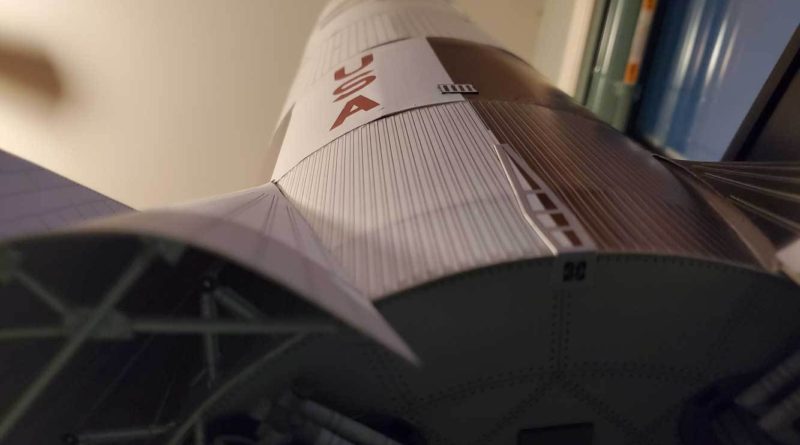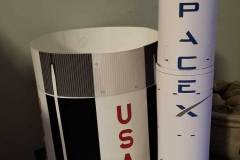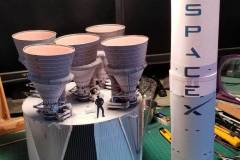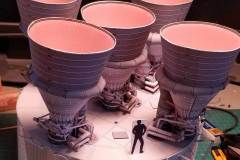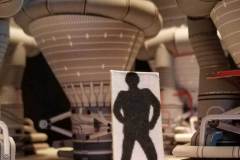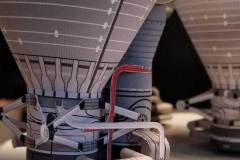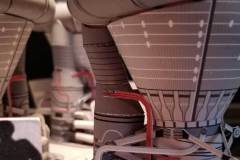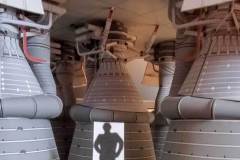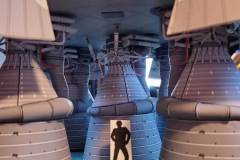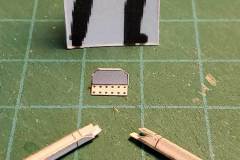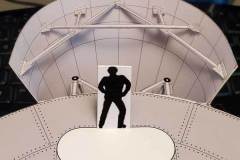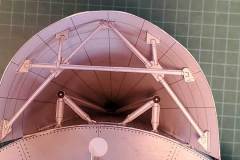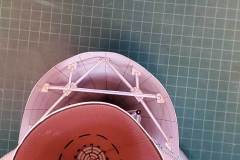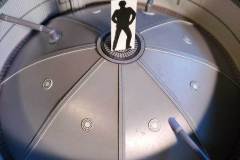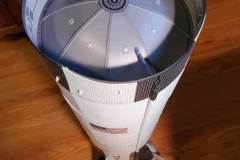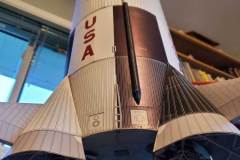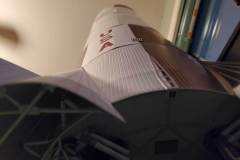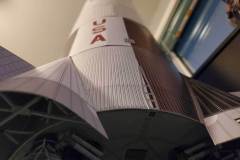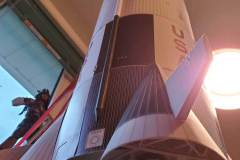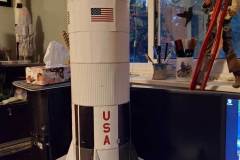Saturn V: First Stage
The job of the First Stage of the Saturn V rocket is to get the behemoth into space. According to NASA’s website…
The first stage of the Saturn V Rocket includes the five F-1 engines producing nearly 7.7 million pounds of thrust.
These powerful engines are required to lift the heavy rocket fast enough to escape Earth’s gravity. The first stage engines are burned at liftoff and last for about 2.5 minutes taking the vehicle and payload to an altitude of 38 miles. The first stage then separates and burns up in the Earth’s atmosphere.
The first Saturn V was launched in an unmanned Earth orbital flight on November 9, 1967, with all three stages performing perfectly. Only one additional research and development flight test was made. Then on its third launch the huge Saturn V was manned.
It sent astronauts Frank Borman, James A. Lovell, Jr., and William A. Anders on a voyage highlighted by mankind’s first orbits of the Moon, on Christmas Eve, 1968.
Based on the first trip around the moon, somehow it seems fitting that I’d be publishing this exactly 52 years later. Too bad it took us that long to even think about getting back.
In the pictures, I’ve also added a size reference of SpaceX’s Falcon 9. Both models are modelled in the same scale, so a direct size comparison can be made. The Falcon 9 is powered by nine Merlin engines delivering a paltry 1.7 million pounds of thrust compared to the 7.7 million the Saturn V is capable of. But remember, the Falcon Heavy, which is basically three Falcon 9’s strapped together, can deliver a combined 5.13 million pounds of thrust and the SpaceX Starship will be capable of a staggering 16 million pounds of thrust! And all of SpaceX’s designs are reusable.
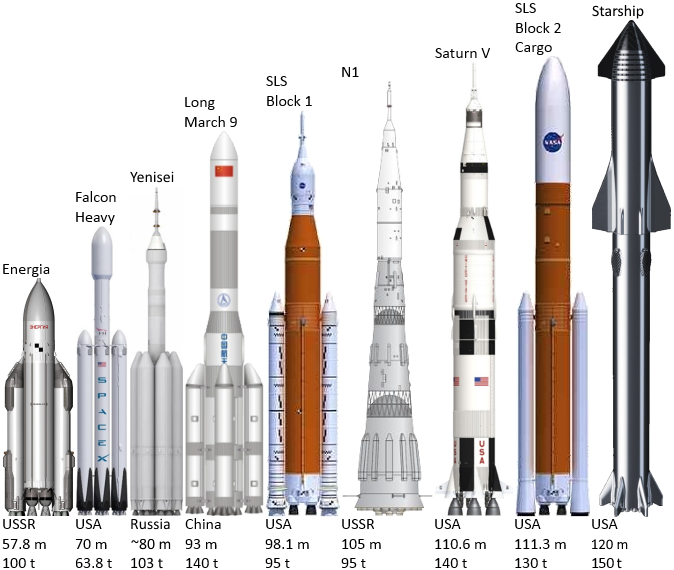
The starship will be comparable in size to the Saturn V, although a little taller and a little thinner.

